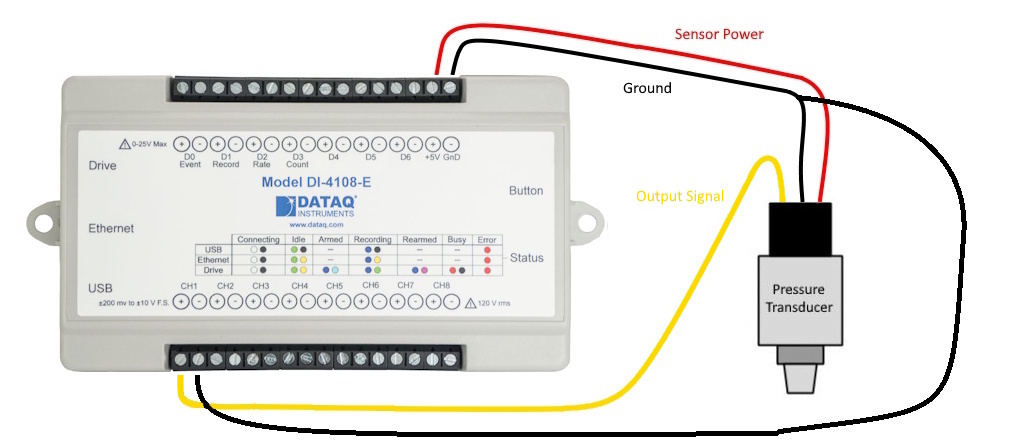What’s the difference between the DI-4×08-E and the DI-4×08-M? At first glance, they appear to be different data loggers all together. In reality, they’re built on the same physical platform. Besides the obvious difference (a metal enclosure vs. a plastic one), there are some important distinctions to be made.

The Enclosures
Ah yes, the enclosures. The DI-4108-E and DI-4208-E are housed in a hardened plastic enclosure, and measure 3.28D × 6.68W × 1.13H in. Two fixed-position screw terminal strips allow you to connect analog and digital signals (to the top and bottom strips, respectively). Bulkhead ears on either side of the DI-4108-E allow for mounting.
The DI-4108-M and DI-4208-M are housed in a rugged, steel wrap-around enclosure, measuring 5.5D × 4.25W × 1.5H in. Two removable screw terminal strips allow for signal connection, and easy signal/application swapping. Screw holes (4/40) on either side of the enclosure allow for mounting using optional right-angle brackets (part #100947-1).
Common Mode Rejection
In additional to a more rugged enclosure, both the DI-4108-M and DI-4208-M feature 80 dB common mode rejection. The DI-4108-E and DI-4208-E have a common mode rejection ratio of 50 dB. A higher common mode rejection ratio (CMRR) means that the amplifiers on the analog inputs are better at rejecting “noise” present on both the positive and negative inputs. For a better understanding of common mode rejection and how measurements are effected, click here.
15VDC Power Supply
The DI-4108-M and DI-4208-M also feature built-in 15VDC power supplies. The 15VDC supply allows you to power sensor like our 4-20mA pressure transducers, which require an 8 to 30VDC supply voltage.
The 5VDC supply built into the DI-4108-E and DI-4208-E works for sensors with a lower supply requirement.



 View Cart
View Cart sales@dataq.com
sales@dataq.com 330-668-1444
330-668-1444